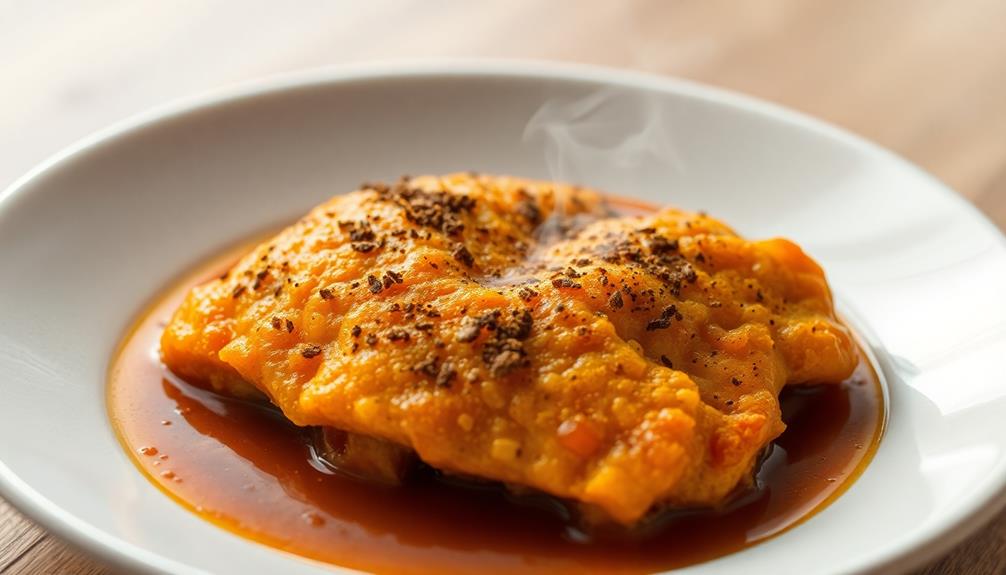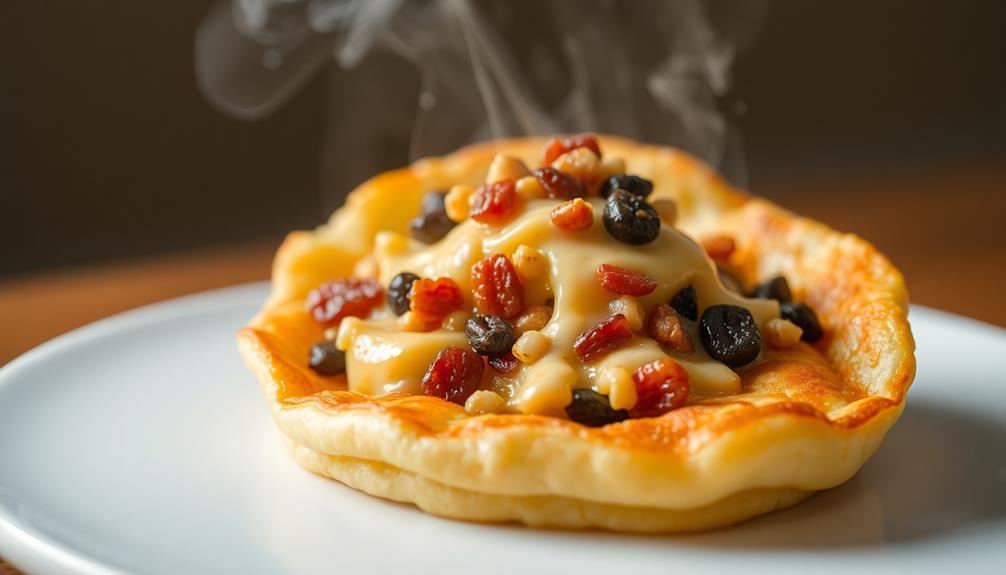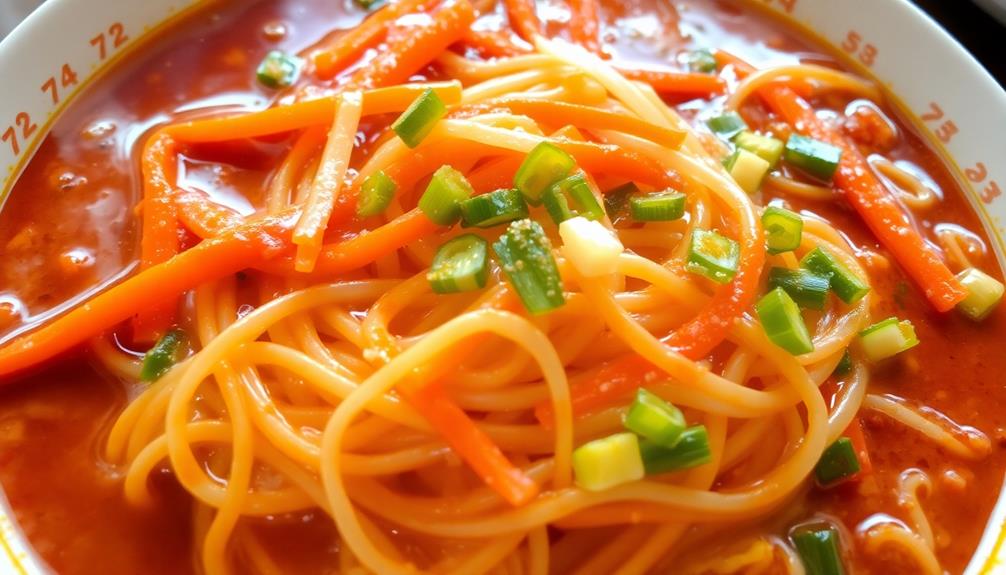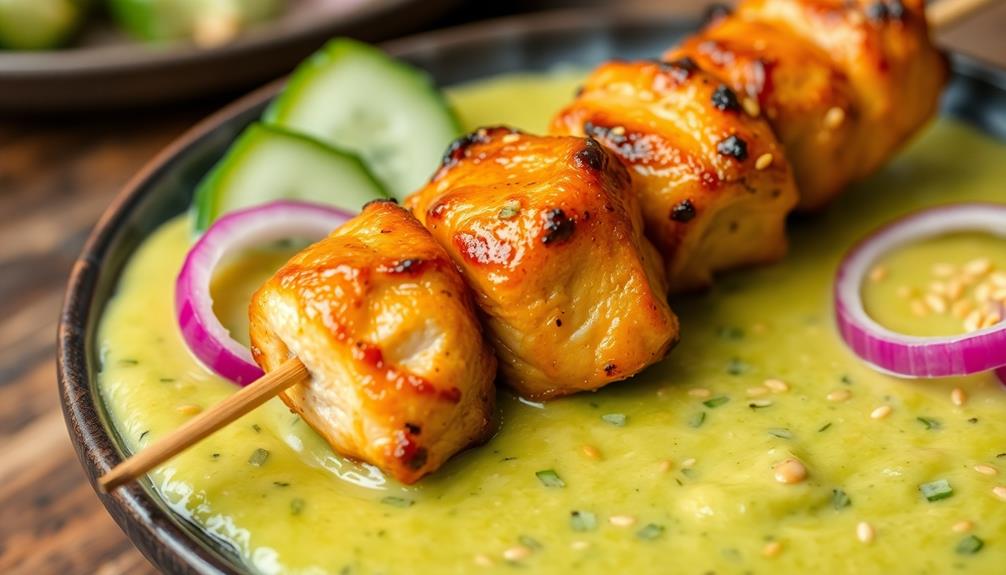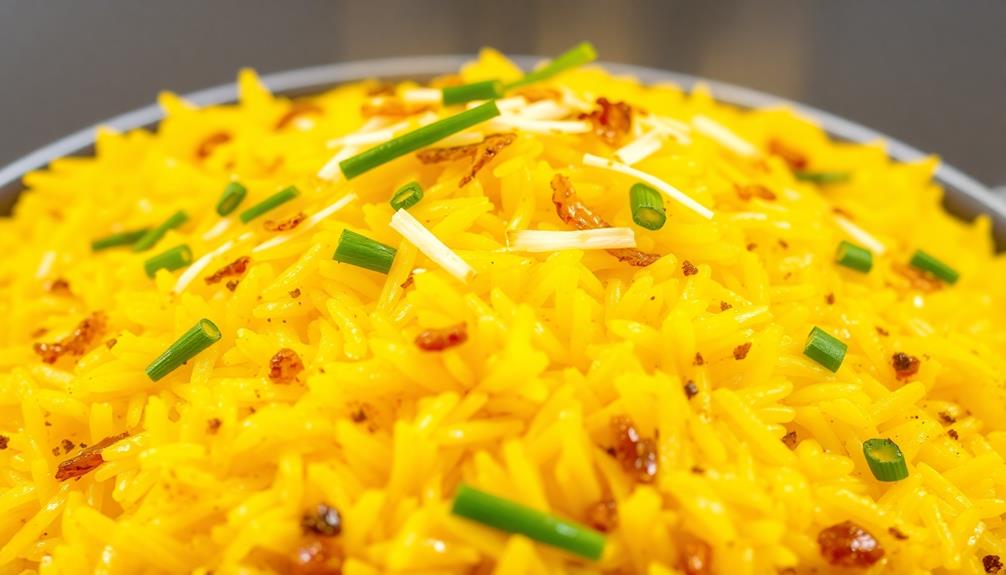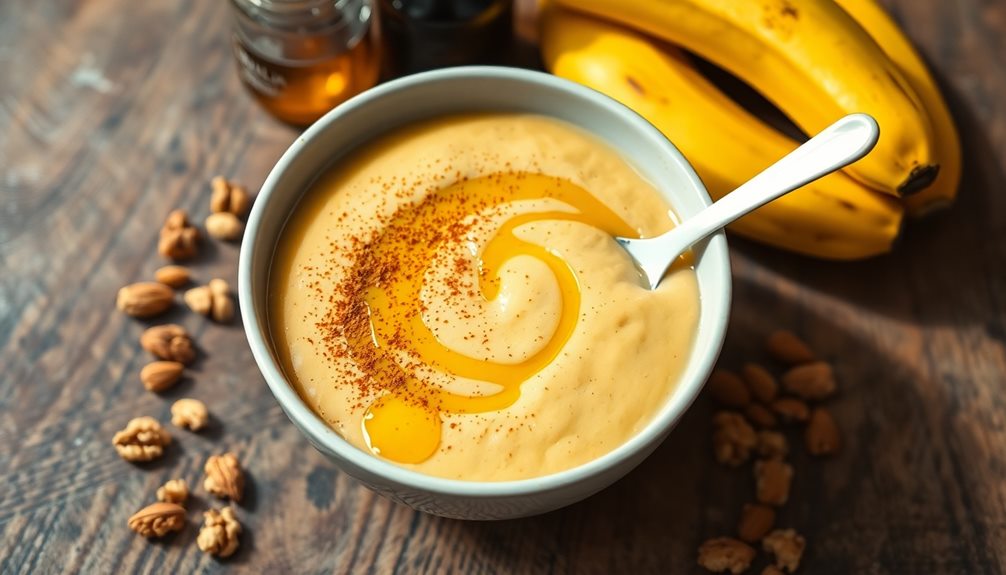Sate Padang, the captivating Padang-style satay, takes you on a delightful culinary journey through Indonesia's rich heritage. This iconic dish, born in early 20th century Padang, West Sumatra, blends tender grilled meat, a tantalizing spicy-savory peanut sauce, and the satisfying crunch of crispy fried shallots. The harmonious flavors transport you to the bustling streets of Padang, where this beloved specialty first gained fame. Whether enjoyed as an appetizer or main course, Sate Padang leaves a lasting impression, and you'll be eager to explore more of Indonesia's vibrant food culture. If you’re looking to recreate the magic of Sate Padang at home, look no further than the traditional Indonesian chicken satay recipe. This time-honored dish calls for marinating succulent chicken pieces in a rich blend of aromatic spices before grilling them to perfection. The resulting tender, juicy skewers paired with the signature peanut sauce and crispy shallots, offer an authentic taste of Indonesia that will undoubtedly leave you craving for more.
Key Takeaways
- Sate Padang is a traditional Indonesian dish originating from Padang, West Sumatra, featuring tender meat skewers with a distinctive spicy and savory peanut sauce.
- The dish has evolved over decades, with various vendors developing their own signature recipes and cooking techniques, contributing to its complex and captivating flavor profile.
- The preparation involves marinating the meat in a blend of aromatic spices, followed by grilling and serving with a rich peanut sauce made from roasted peanuts, coconut milk, and a variety of spices.
- Sate Padang is often served with ketupat, a traditional Indonesian rice cake, which provides a chewy texture to complement the savory and spicy flavors of the dish.
- The addition of crispy fried shallots as a garnish adds a delicate, aromatic flavor and satisfying crunch, enhancing the overall experience of the dish.
History
Sate Padang, a beloved culinary icon of Indonesia, has a rich history dating back to the early 20th century. This iconic dish originated in the bustling city of Padang, West Sumatra, where skilled street vendors first began serving their unique take on the classic Indonesian satay.
What sets Sate Padang apart is its distinctive spicy and savory sauce, made from a blend of chili peppers, shallots, garlic, and a variety of aromatic spices. The meat, typically beef or buffalo, is carefully seasoned and grilled to perfection, then served alongside the tantalizing sauce and an array of accompaniments, such as ketupat (rice cakes) and lontong (compressed rice).
Over the decades, Sate Padang has evolved, with each vendor developing their own signature recipes and techniques.
Today, this beloved dish is enjoyed across Indonesia and has even gained international fame, captivating taste buds with its bold, complex flavors and tender, juicy meat.
Recipe
Sate Padang is a popular Indonesian dish that originated from the city of Padang, West Sumatra. It consists of tender beef or buffalo meat skewered and served with a rich, spicy peanut sauce. The distinct flavors of this dish come from a blend of aromatic spices and a touch of acidity from the use of lime juice.
Preparing Sate Padang at home can be a rewarding experience, allowing you to recreate the authentic flavors of this beloved street food. With the right ingredients and a bit of patience, you can enjoy this delectable dish in the comfort of your own kitchen.
Ingredients:
- 1 lb beef or buffalo, cut into thin strips
- 12 bamboo skewers, soaked in water for 30 minutes
- Cooking oil for grilling
For the Spice Paste:
- 6 cloves garlic
- 4 shallots
- 3 candlenuts or macadamia nuts
- 2 lemongrass stalks, tender white part only
- 2 red chilies
- 1 tsp ground coriander
- 1 tsp ground cumin
- 1 tsp salt
For the Peanut Sauce:
- 1/2 cup roasted peanuts, ground
- 1 cup coconut milk
- 2 tbsp tamarind paste
- 2 tbsp brown sugar
- 1 tsp salt
- 1/2 tsp ground coriander
- 1/2 tsp ground cumin
Cooking Instructions:
In a food processor or blender, combine all the ingredients for the spice paste and blend until a smooth paste forms.
Coat the beef strips with the spice paste, cover, and refrigerate for at least 30 minutes to allow the flavors to infuse.
Thread the marinated beef onto the soaked bamboo skewers. Preheat a grill or grill pan and cook the sate, turning occasionally, until the beef is cooked through and lightly charred, about 8-10 minutes.
In a saucepan, combine all the ingredients for the peanut sauce and simmer, stirring occasionally, until the sauce thickens, about 10 minutes.
Serve the grilled sate skewers with the peanut sauce on the side.
Tips:
- Soak the bamboo skewers in water for at least 30 minutes to prevent them from burning during grilling.
- Adjust the amount of chilies in the spice paste based on your desired level of spiciness.
- Serve the sate Padang with steamed white rice, cucumber slices, and a sprinkle of fried shallots for a complete and authentic dining experience.
Cooking Steps
Marinate the meat in a zesty spice mixture, then grill the skewers over hot charcoal for that smoky, grilled flavor.
Serve the sate Padang with a creamy peanut sauce and fluffy ketupat (rice cakes), and don't forget to top it all off with crispy fried shallots.
Step 1. Marinate Meat With Spice Mixture
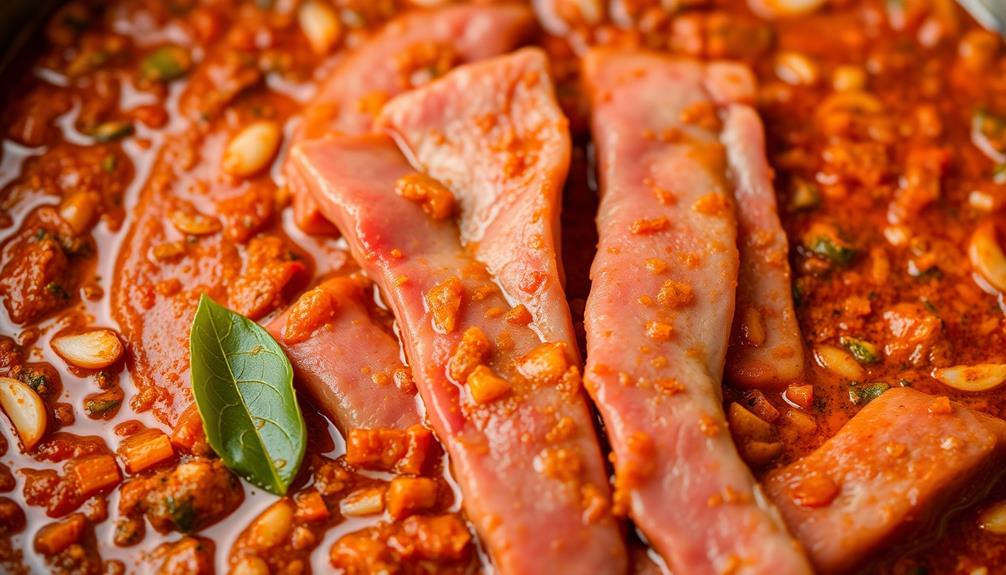
To get the perfect Sate Padang, you'll need to marinate the meat with a spice mixture. Start by combining ground coriander, cumin, turmeric, garlic, shallots, and chilies in a large bowl.
Add a pinch of salt and pepper, then stir everything together until the spices are well-blended.
Next, add your choice of meat – beef or chicken work great. Gently massage the spice mixture into the meat, making sure each piece is coated evenly.
Cover the bowl and let the meat marinate for at least an hour, or up to 24 hours if you have the time. The longer you let it sit, the more flavorful the final dish will be.
When you're ready to start cooking, thread the marinated meat onto skewers. This will make it easier to grill or broil the sate to perfection.
Just be sure to keep a close eye on it, turning the skewers frequently, until the meat is cooked through and slightly charred around the edges.
Step 2. Grill Meat Skewers Over Charcoal
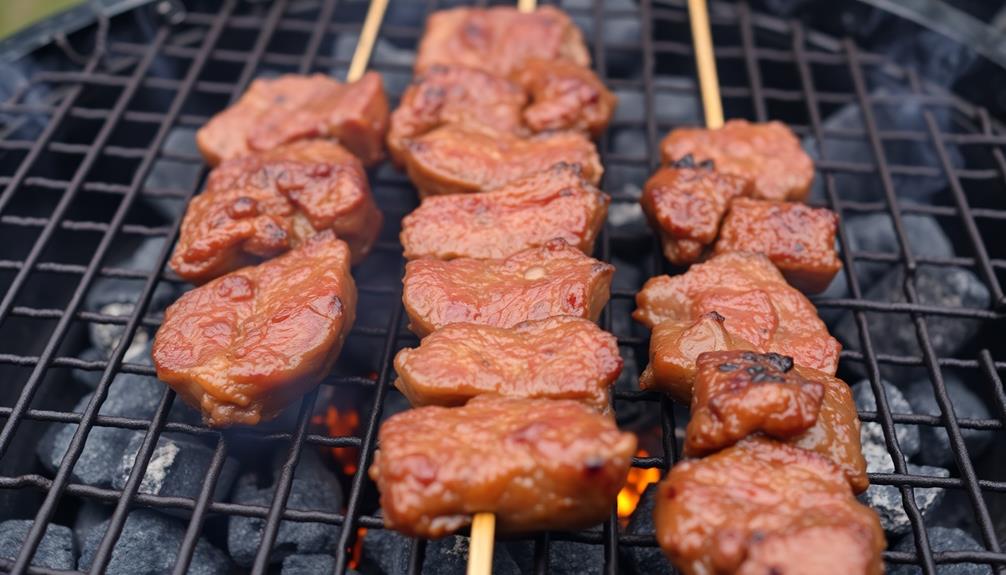
Fire up your charcoal grill or preheat your broiler to high heat. Once it's scorching hot, thread the marinated meat onto skewers. Make sure to leave a little space between each piece so they cook evenly.
Carefully place the skewers directly over the intense flames or under the broiler.
Grill or broil the meat, turning occasionally, until it's lightly charred and cooked through, about 8-10 minutes. Keep a close eye to prevent burning. The high heat will seal in the flavors and create a delightful smoky char.
Once the meat is perfectly grilled, transfer the skewers to a serving platter. Serve the sizzling hot sate padang with the tangy peanut sauce and garnishes like cucumber, onion, and lime wedges.
Mmm, the aroma of those charred, spice-infused meat skewers is simply mouthwatering! Dig in and enjoy every last bite of this beloved Indonesian specialty.
Step 3. Serve With Padang-Style Peanut Sauce
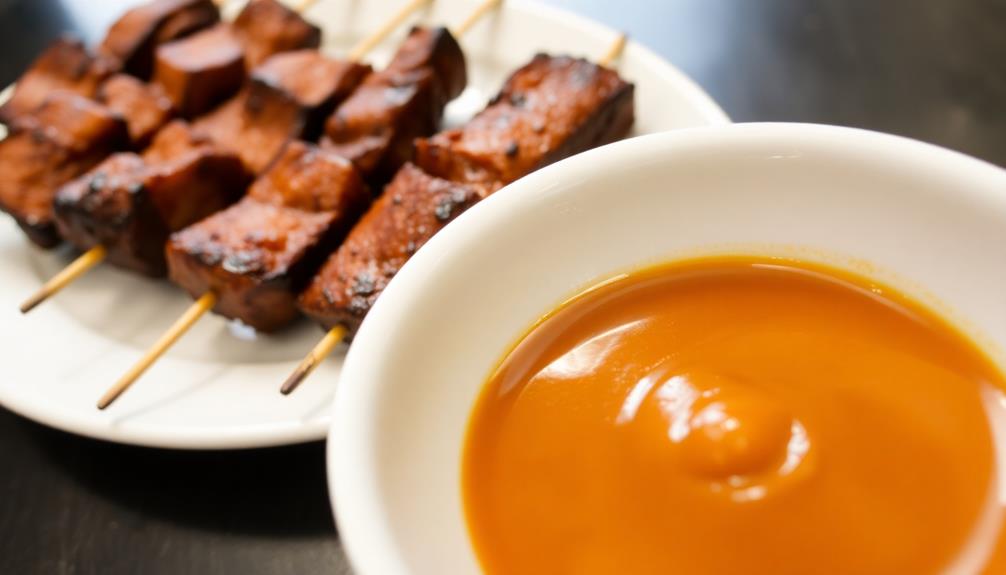
The peanut sauce is the perfect accompaniment to the grilled sate padang. It's a rich, creamy sauce that perfectly balances the savory meat skewers. To make it, you'll need roasted peanuts, coconut milk, palm sugar, garlic, shallots, chili peppers, lemon juice, and spices like coriander and cumin.
First, blend the peanuts, garlic, shallots, and chili peppers into a smooth paste. In a saucepan, combine the peanut paste, coconut milk, palm sugar, lemon juice, and spices.
Simmer the sauce, stirring frequently, until it thickens to your desired consistency. The sweet, nutty, and slightly spicy flavors will meld together, creating a sauce that's bursting with complexity.
Drizzle the warm peanut sauce over the sate padang, allowing the flavors to intermingle. You can also serve the sauce on the side for dipping.
The cool, creamy sauce provides a delightful contrast to the hot, charred meat skewers, making every bite a delicious experience.
Step 4. Serve Sate Padang With Ketupat
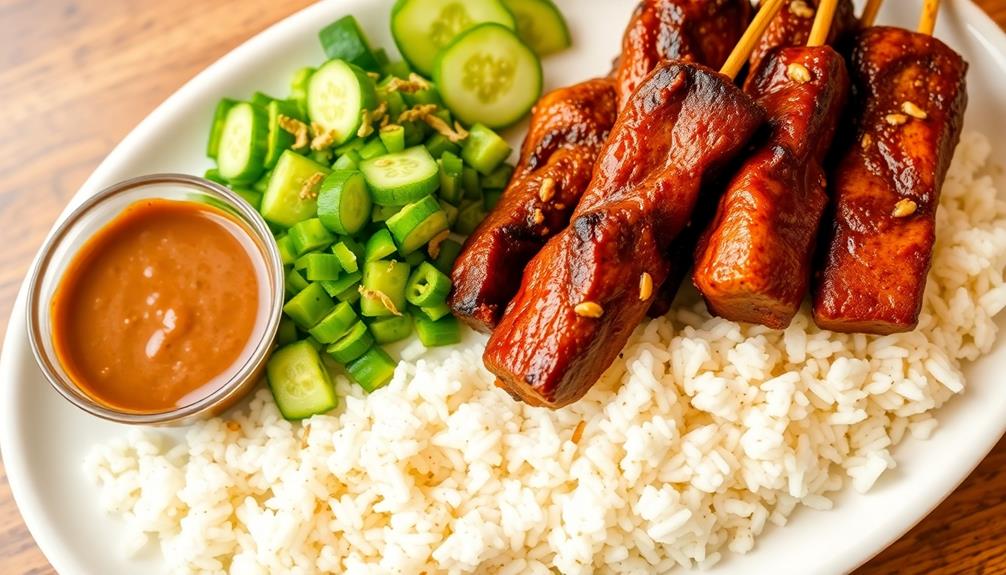
Alongside the flavorful sate padang, you'll want to serve up a side of ketupat, the classic Indonesian rice cakes. These bite-sized parcels are made by boiling rice in coconut leaves, which gives them a unique shape and texture.
The ketupat's slightly chewy and dense interior pairs perfectly with the savory and slightly spicy sate padang.
To serve, simply place the warm ketupat alongside the sate padang on a plate. The ketupat can be cut open to reveal the compressed rice inside, ready to be dipped into the rich peanut sauce that accompanies the sate.
The contrast of the soft, starchy ketupat and the tender, marinated meat is a delightful combination that will have your taste buds dancing.
Don't forget to offer extra peanut sauce for those who want to drizzle it over the top. The perfect pairing of sate padang and ketupat is a beloved Indonesian classic that's sure to delight your guests.
Step 5. Garnish With Crispy Fried Shallots
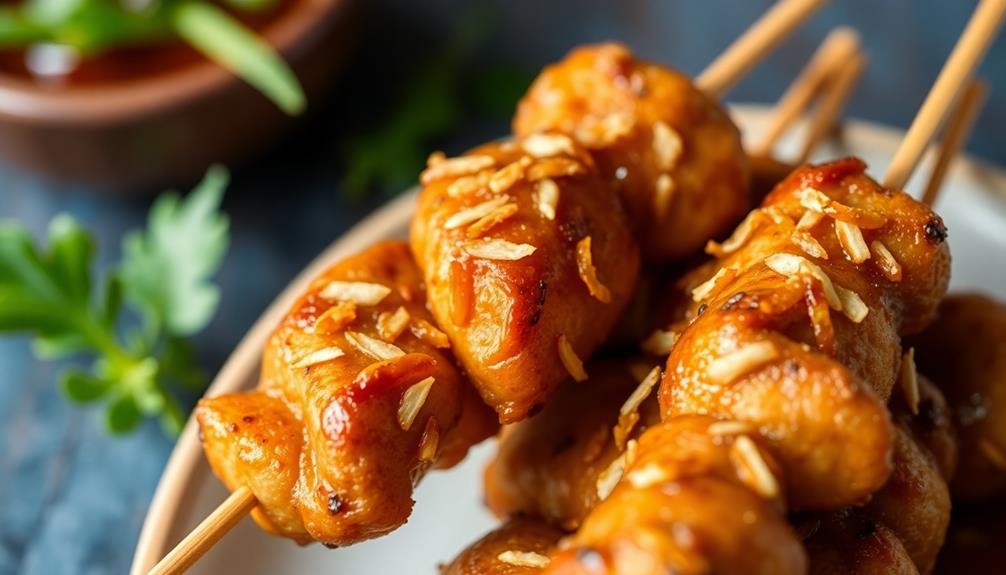
To elevate your sate padang, crispy fried shallots make for a delightful garnish. These crunchy, golden-brown slices add a fabulous flavor and texture contrast to the rich, savory skewers.
Start by thinly slicing some fresh shallots. Then, heat up a generous amount of oil in a skillet over medium heat. Carefully add the shallot slices and fry them until they turn a gorgeous golden-brown. Be sure to stir occasionally to ensure even cooking.
Once they've reached the perfect crispy texture, remove the shallots from the oil and place them on a paper towel-lined plate to drain. Sprinkle the crispy fried shallots over your sate padang just before serving. Their delicate, aromatic flavor and satisfying crunch will elevate the dish to new heights.
The shallots' vibrant color also makes for a lovely visual presentation. Give this simple yet impactful garnish a try – your taste buds will thank you!
Final Thoughts
Sate Padang is a captivating culinary experience that leaves a lasting impression. Even after savoring the final morsel, you'll find yourself craving more of this incredible dish. The harmonious blend of spices, tender meat, and crisp shallots creates a symphony of flavors that dance on your palate.
As you savor the final bites, you can't help but feel a sense of satisfaction and delight. The complexity of the flavors is truly remarkable, with each component playing a crucial role in the overall experience. The charred, flavorful meat, the tangy and slightly sweet peanut sauce, and the crunchy shallots come together in a delightful harmony that's both comforting and exciting.
Whether enjoying Sate Padang as an appetizer or a main course, the journey from the first bite to the last is a truly memorable one. It's a dish that showcases the rich culinary heritage of Indonesia and leaves you eager to explore more of the country's vibrant food culture.
Frequently Asked Questions
What Is the Origin of the Name "Sate Padang"?
The name "sate padang" comes from the city of Padang in West Sumatra, Indonesia, where this distinct style of skewered meat dish originated. It's known for its rich, spicy peanut sauce and unique flavors that set it apart from other Indonesian satay varieties.
How Does Sate Padang Differ From Other Indonesian Satay Dishes?
Sate Padang differs from other Indonesian satay dishes in its distinct spicy and savory flavor profile, often featuring a thick peanut sauce and tender beef or offal. It's a unique regional speciality that sets it apart from more familiar satay varieties.
What Are the Typical Accompaniments Served With Sate Padang?
When enjoying sate padang, you'll typically find it served with an array of tasty accompaniments, such as ketupat (compressed rice cakes), sayur labu (butternut squash in coconut milk), and a fiery sambal chili sauce to complement the flavorful skewered meat.
Can Sate Padang Be Made Vegetarian or Vegan?
You can certainly make a vegetarian or vegan version of sate padang. Instead of meat, you can use tofu, tempeh, or even mushrooms as the protein source. The key is to replicate the flavors with spices and marinades.
How Long Does It Typically Take to Prepare Sate Padang?
Preparing sate padang can take some time, usually around 2-3 hours. You'll need to marinate the meat, skewer it, and then grill or broil it. The sauce also needs to be prepared, which adds to the overall prep time.

